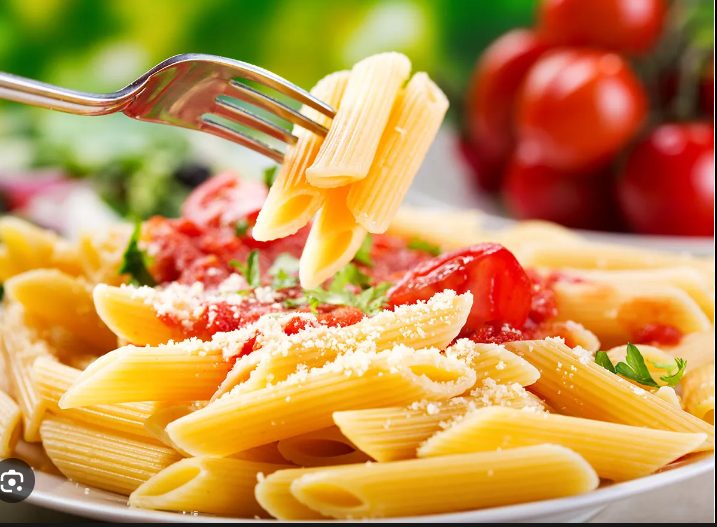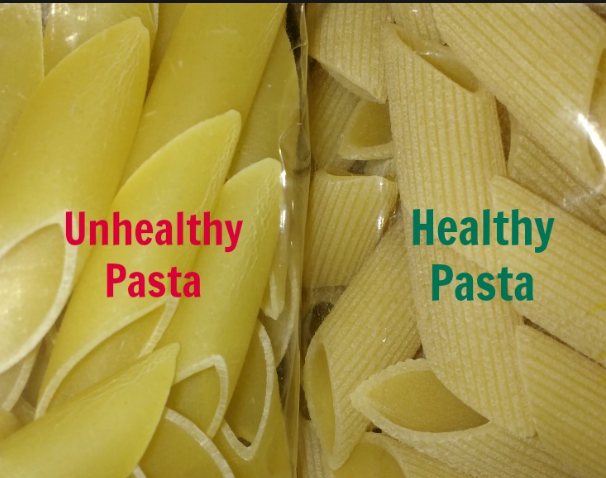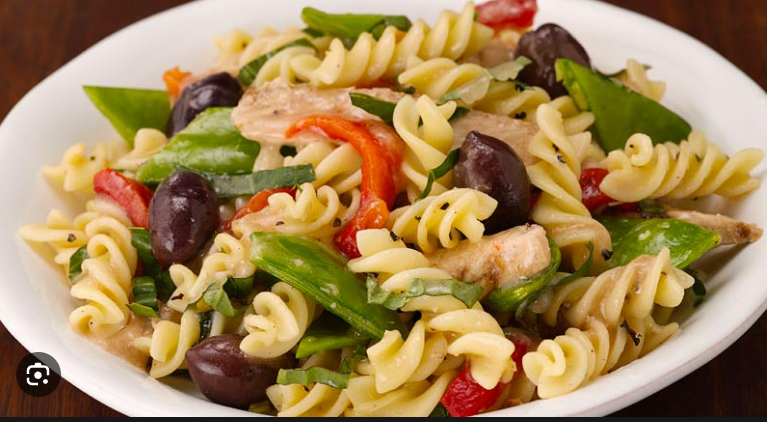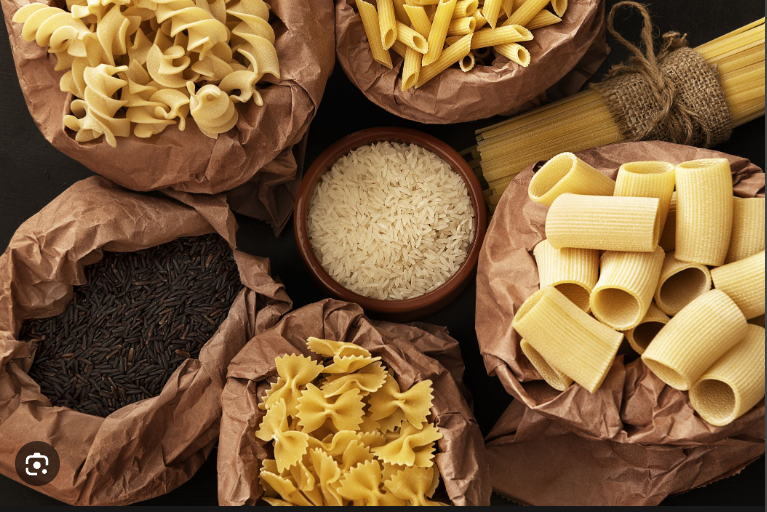Contrary to popular belief, spaghetti can be a healthy, well-balanced dinner with lean proteins and veggies. Learn how to consume pasta in a healthy way.
Do you get sick of hearing that spaghetti is only a high-carb indulgence? it is a versatile food that can be included in your diet in a variety of ways. It’s not just a bunch of noodles drenched in creamy sauces.
Learn more about the benefits of eating it, its nutritional content, and the healthiest methods to consume it.
What is Pasta?

Also read-What Is Carb Cycling And What Does It Include?
Numerous shapes and variations of pasta, such as long, thin strands of spaghetti or short, cylindrical tubes of penne, are a mainstay of Mediterranean cuisine. Pasta dishes, including fettuccini, tortellini, lasagna, penne, and macaroni, are also popular.
Standard pasta is manufactured from refined wheat flour, sometimes known as “white flour,” according to Carrie Dennett, a registered dietitian with a practice in the Pacific Northwest and the proprietor of Nutrition by Carrie. Pasta is made with wheat flour, water, eggs, and other ingredients.
Because most of it is made from refined wheat flour, it’s low in fiber and many of the nutrients that are normally present in wheat. But Dennett points out that many brands of white pasta are enriched with iron and B vitamins, including folate.
“It is not a major source of vitamins, but it does have some in smaller amounts,” says Michelle Saari, a registered dietitian based in Canada and founder of The Dietitian Prescription, a website that aims to help people choose foods that are good for blood sugars, energy, and their weight. She adds that it contains about 9% of your daily iron recommendations, 6% magnesium and 5% of your daily vitamin B6 recommendations
Is pasta bad for you?

Pasta has a negative reputation as a high-carb food that promotes weight gain and is linked to conditions including diabetes, high blood sugar, and obesity.
“The Mediterranean diet, which is a conventional and healthful method of eating, includes it. It may be a nutritious food, but it may also be consumed in a way that renders it less nutritious, according to Dennett.
She continues, “That’s true of dozens of foods. If pasta is a cuisine that a person enjoys, it may definitely be included in a diet that also contains other healthy foods.
Although it’s a common misconception, eating it may not cause weight gain. Observational and limited clinical evidence suggests that it consumption is either inversely or not linked with overweight or obesity in healthy children and adults, according to a study that uncovered 38 pertinent studies looking at body weight outcomes or potential processes. Additionally, the study discovered that it does not cause weight gain when consumed as part of a healthy diet.
In fact, when included in a balanced diet, it may offer additional nutritional benefits. When compared to non-consumers for both children and adults, researchers discovered that pasta consumers had higher daily intakes of fiber, folate, iron, magnesium, and vitamin E. Overall, they discovered that eating pasta was connected with better diet quality and improved nutrient intakes.
Whole-Grain Pasta vs. Refined Pasta

The majority of individuals eat refined pasta. The bran and germ of wheat have been removed during processing to create the standard box of spaghetti or penne that you may see on the grocery store shelves.
While whole grains might comprise a variety of grains, including wheat, barley, or oats, whole grain is manufactured from these grains. Similar to this, the entire wheat kernel is used to make whole-wheat pasta. According to Dennett, some it compromise by having around half-whole grains.
Dietary fiber can be found in abundance in whole grains. Because it gives your food more volume and takes longer to digest, fiber helps your body feel full. Furthermore, “fiber helps slow the release of glucose (the broken-down carbohydrates) in it, which benefits your blood sugar and energy levels,” Saari claims.
“One cup of whole-wheat spaghetti has more than 4 grams of fiber, compared with about 2 grams for an equivalent portion of refined enriched spaghetti,” explains Dennett.
“Refined wheat flour is stripped of its bran, making it a poor source of fiber,” Stefanski states.
The U.S. Department of Agriculture recommends that half of the grains you consume in a day should be whole grains. “Whole grains naturally contain more fiber and more B vitamins and are broken down more slowly in the body than refined grains,” Stefanski says. “Whole grains also provide more digestive material for microbes within our intestines.”
Is low-carb pasta healthy?

In recent years, many pasta alternatives have hit the market. Low-carb pasta is a type of it designed to have fewer carbohydrates compared with traditional wheat-based .
Low-carb typically uses alternative ingredients to wheat flour, such as:
- Almond flour.
- Coconut flour.
- Bean flour.
Vegetable-based pasta, including spiralized zucchini, sweet potato gnocchi, or cauliflower-based noodles, has also gained popularity among consumers as a low-carb substitute.
According to Dennett, “some low-carb will vary in flavor and nutrition depending on what they’re made of, so some may not pair well with certain sauces.” While certain low-carb pastas, such as spiralized veggies, clearly have nothing in common with it, she continues, “others, like low-carb pasta, might be as satisfying as traditional pasta.” “That’s fine if you’re just looking for a vehicle for a certain sauce and honestly don’t care if it’s real pasta or not, but if you’re disappointed rather than satisfied, that’s not a good recipe for a healthy relationship with food,” she said.
For those who are on a low-carb or ketogenic diet, have diabetes, or just wish to consume fewer carbohydrates overall, low-carb pastas may be a smart option.
Other options include spaghetti made from lentils and chickpeas, which, while not low in carbohydrates, are higher in protein and fiber and can be quite delectable, according to Dennett.
Bottom Line

Pasta, while often rich in calories and carbohydrates, can still be enjoyed in moderation, especially when paired with protein and vegetables.
“Remember that not every food we include has to hit a nutritional home run,” Dennett emphasizes. “A diet that includes a lot of nutrient-rich whole or minimally processed foods has room for foods that are more neutral nutritionally, as well as those that are more about pleasure and satisfaction than nutrition, per se.”
Also read-Are Seed Oils And Vegetable Oils Bad For You?
images source-google




































